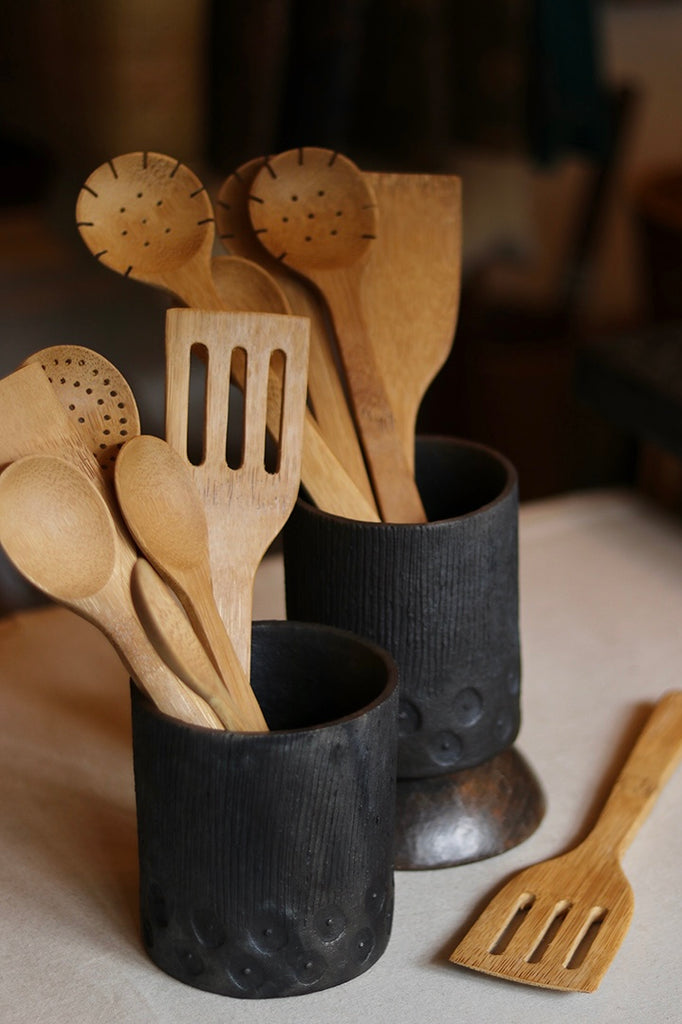Bamboo: A Culinary Adventure

In the world of gastronomy, there are countless ingredients that inspire creativity and culinary exploration. One such ingredient that has been captivating chefs and food enthusiasts alike is bamboo. Often associated with pandas and towering forests, bamboo is an incredibly versatile and sustainable plant that has found its way into various cuisines around the world.
Did you know that there are over 1,500 species of bamboo found across the globe? From Asia to the Americas, bamboo thrives in diverse climates, making it a versatile culinary ingredient. In the coming chapters, we'll discover the various ways in which bamboo manifests in the culinary world, from tender shoots to nutrient-rich leaves and even the bamboo sap known as "bamboo water."
Chapter 1: Bamboo Shoots: The Delicate Delight
One cannot discuss bamboo cuisine without highlighting the wonders of bamboo shoots. These edible sprouts hold a special place in the culinary traditions of many cultures. From China to India, from Japan to Thailand, bamboo shoots find their way into a myriad of traditional recipes.

Chapter 2: Bamboo Leaves: Nature's Wrapping Paper
Bamboo leaves serve as an edible vessel for various culinary delights. They are often used in traditional Asian cooking to wrap rice dumplings, giving them a distinctive aroma and flavour. These bamboo leaf-wrapped delicacies, known as zongzi, are a common sight during festivals and celebrations. The leaves infuse the rice with a subtle, earthy taste, and as they steam, they release an irresistible fragrance that entices the senses.

Photo courtesy: Ahead of Thyme.
Chapter 3: Bamboo Charcoal: A Twist of Elegance
When bamboo is subjected to intense heat, it transforms into a substance known as bamboo charcoal. With its jet-black colour and porous texture, bamboo charcoal has gained popularity as an ingredient that adds a touch of elegance to culinary creations. Chefs often use it in unique ways, such as infusing it into ice cream, creating visually striking black buns, or even incorporating it into sauces to add depth and smokiness.

Photo courtesy: Sports Casual International.
Chapter 4: Distinctive bamboo delights
In the scenic Araku Valley of India, a unique culinary gem awaits - bamboo biryani. This delightful dish showcases the fusion of local Andhra cuisine and the aromatic flavors of biryani. Cooked in bamboo stalks, the rice absorbs the earthy essence of bamboo, creating a truly unforgettable dining experience. The tender meat or vegetables, aromatic spices, and the smoky undertones of bamboo combine to create a biryani like no other. For more information and a recipe to try, visit: Araku Bamboo Chicken Rice.
Another delicacy is the Bamboo pickle, known as "Mulayari Achar," traditionally from Kerala, India. Tender bamboo shoots are marinated in a blend of aromatic spices, resulting in a tangy and flavorful condiment. This pickle adds a zingy kick to Kerala meals and is enjoyed with rice, curries, or snacks like dosas. Not only delicious, but bamboo pickle also offers health benefits, as bamboo shoots are low in calories and rich in fiber and essential nutrients. Embodying Kerala's sustainable practices, bamboo pickle showcases the region's commitment to eco-friendly culinary traditions.
Chapter 5: Fusion Cuisine: Bamboo Beyond Borders
While bamboo has deep-rooted cultural significance in Asian cuisines, its versatility allows it to transcend borders and find a place in fusion cooking. Talented chefs around the world have been experimenting with bamboo, incorporating it into their innovative creations. From bamboo shoot salads with citrus dressings to bamboo charcoal-infused desserts with a Western twist, bamboo's culinary potential knows no bounds.
Chapter 6: Bamboo Utensils: An Eco-Friendly Choice
Beyond being a delicious ingredient, bamboo serves a practical purpose in the culinary world as well. Bamboo utensils have gained popularity due to their eco-friendly nature. From bamboo chopsticks to bamboo steamers and serving bowls, these sustainable alternatives are not only aesthetically pleasing but also help reduce our reliance on single-use plastic. You can explore and purchase bamboo utensils by visiting this shopping link: https://bamboopecker.com/collections/kitchen-dining

In the quest for eco-friendly alternatives to single-use plastics, bamboo straws have emerged as a sustainable solution. Crafted from natural bamboo stalks, these straws are biodegradable and reusable. With their rustic appearance, bamboo straws add elegance to any beverage. They are easy to clean and can be used in various settings. You can find bamboo straws including a travelers set of bamboo cutlery, from this shopping link: Bamboo Cutlery Set.

Moreover, these eco-friendly bamboo products, such as utensils and straws, can revolutionize traveling sustainably. By carrying your own bamboo cutlery set and straws, you can reduce the need for single-use plastics while enjoying meals on the go. This not only helps to minimize plastic waste but also promotes environmentally friendly practices wherever your travels may take you.
From the delicate shoots to the fragrant leaves and the unexpected delights of bamboo charcoal and water, bamboo has showcased its versatility and captivated our taste buds. So, the next time you encounter this majestic plant, remember the culinary potential it holds. Embrace the adventure, experiment with new flavours, and let bamboo elevate your culinary creations to new heights. Bon appétit!
